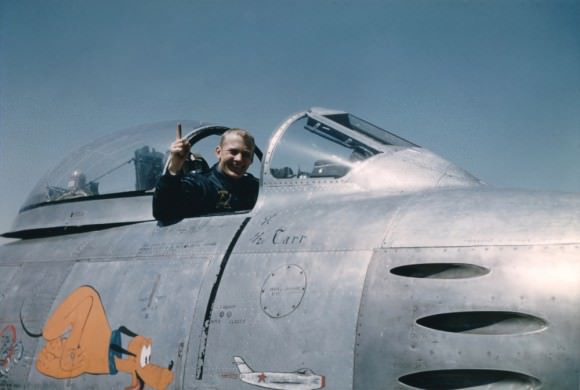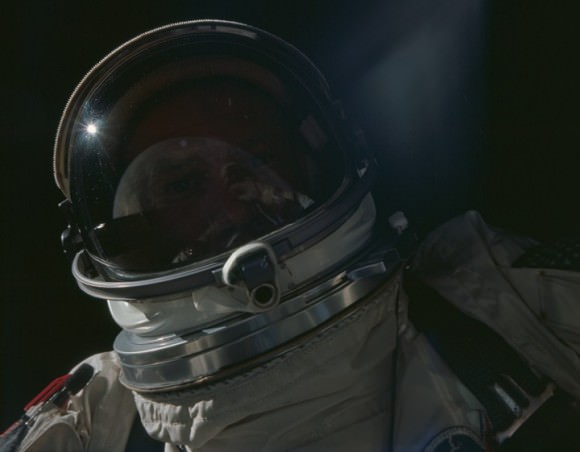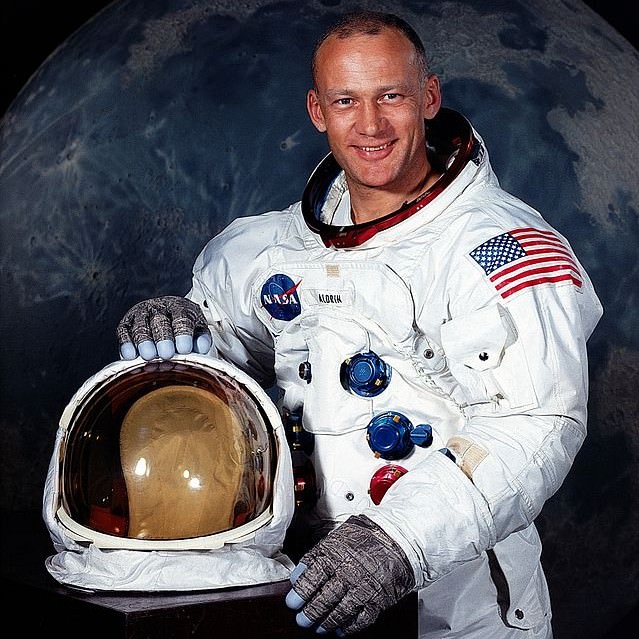Astronaut, engineer, author, and actor, Edwin “Buzz” Aldrin is what you might call a living legend. As the Lunar Module Pilot aboard the Apollo 11 mission, and second man to walk on the Moon, he is exceeded only by Neil Armstrong when it comes to the most famous astronauts that have ever lived.
And much like all astronauts who left an indelible mark on history, the path that brought Aldrin to the Moon began early in his life. And since achieving the dream of countless generations, he has gone on to inspire others to make similar leaps, advocating space exploration, and a mission to Mars.
Early Life:
Born Edwin Eugene Aldrin on January 20th, 1930, in Montclair, New Jersey to a military family, Aldrin picked up his famous nickname from the younger of his two elder sisters. Unable to pronounce brother, he let her call him “buzzer”, which was eventually shortened to “Buzz”. During his childhood, Aldrin was also a boy scout, earning the rank of Tenderfoot Scout.
After graduating from high school, Aldrin wanted to follow in his father’s footsteps. As such, he turned down a scholarship to the Massachusetts Institute of Technology (MIT) and instead enrolled in the United States Military Academy at West Point, New York. He would later enroll at MIT to complete his studies, but not before going off to war.
Military Career:
Upon graduating in 1951 from West Point with a Bachelors of Science in Mechanical Engineering, Aldrin was commissioned as a 2nd Lieutenant in the United States Air Force. During the Korean War, he served as a jet fighter pilot, flying 66 combat missions in F-86 Sabres and shooting down two MiG-15 aircraft.
After the war, he was assigned as an aerial gunnery instructor at Nellis Air Force Base in Nevada before becoming a flight commander at Bitburg Air Base in West Germany, where he flew F-100 Super Sabres with the 22nd Fighter Squadron.

After completing his military service, Aldrin returned to MIT to receive his Doctor of Science degree in Aeronautics. In 1963, he was assigned to the Gemini Target Office of the Air Force Space Systems Division in Los Angeles, and began to pursue a career in space exploration. Initially, his application was rejected since he had never been a test pilot. However, that prerequisite was lifted when Aldrin re-applied, and he was accepted into the third group of astronauts in October of 1963.
Gemini Program:
Aldrin was initially selected to participate in the Gemini program, and after the deaths of the original Gemini 9 prime crew (Elliot See and Charles Bassett) Aldrin and Jim Lovell were promoted to backup crew for the mission. The main objective of the revised mission (Gemini 9A) was to rendezvous and dock with a target vehicle.
When this failed, Aldrin improvised an effective exercise for the craft to rendezvous with a co-ordinate in space. On his next mission – Gemini 12, which took place in 1966 – Aldrin served as the pilot and set a record for extra-vehicular activity (EVA), demonstrating that astronauts could work outside spacecraft.

Apollo 11:
As the Lunar Module Pilot of the Apollo 11 mission, Aldrin became the second astronaut to walk on the Moon on July 21st, 1969. Aldrin’s first words on the Moon were “Beautiful view. Magnificent desolation.” As a Presbyterian, Aldrin decided to hold a religious ceremony on the Moon, and became the first man to do so.
Using a home communion kit given to him, he reciting words used by his pastor at Webster Presbyterian Church (Rev. Dean Woodruff). The ceremony was not communicated back to Earth and was a private affair. However, after landing on the Moon, Aldrin radioed Earth and said:
I’d like to take this opportunity to ask every person listening in, whoever and wherever they may be, to pause for a moment and contemplate the events of the past few hours, and to give thanks in his or her own way.
In later years, Aldrin expressed some regret, thinking that a Christian service may not have been in keeping with the spirit of going to the Moon for all of humanity. However, for him personally, it was a significant event and in keeping with his personal faith.
According to different NASA accounts, it had originally been proposed that Aldrin be the first to step onto the Moon’s surface. But due to the physical positioning of the astronauts inside the compact lunar landing module, it was easier for the commander, Neil Armstrong, to be the first to exit the spacecraft.

Retirement:
After leaving NASA in 1971, Aldrin was assigned as the Commandant of the U.S. Air Force Test Pilot School at Edwards Air Force Base, California. In March 1972, Aldrin retired from active duty after 21 years of service, due to personal issues stemming from clinical depression and alcoholism. Afterward, he sought treatment for these problems, and his life improved considerably.
Following his retirement, Aldrin remained active in promoting space. He created a nonprofit organization named ShareSpace which supports space education, has written several books, and even released a CD with Snoop Dogg and other rappers in order to promote space. He has been very vocal regarding his belief that NASA should be moving ahead with a manned mission to Mars.
Since retiring from NASA, he has also had an impressive career in television and film, appearing on multiple episodes of hit TV shows, TV movies, documentaries, and as a contestant on Dancing with the Stars. He has also done extensive voice-over work for animated shows, movies, and the video game Mass Effect 3.
Like Neil Armstrong, Buzz Aldrin has received numerous medals and awards for his service – including the Presidential Medal of Freedom, the Air Force Distinguished Service Medal, three Air Medals, the NASA Distinguished Service Medal, the NASA Exceptional Service Medal, two NASA Space Flight Medals, and the Harmon International Trophy. He has also received honorary degrees from six colleges and universities.
Aldrin has been married three times and has three children and one grandson.
Universe Today has articles on Buzz Aldrin and Buzz Aldrin raps with Snoop Dogg.
For more information, try Buzz Aldrin and Snoop Dogg and biography of Buzz Aldrin.
Astronomy Cast has episodes on the Moon.
Source: NASA

